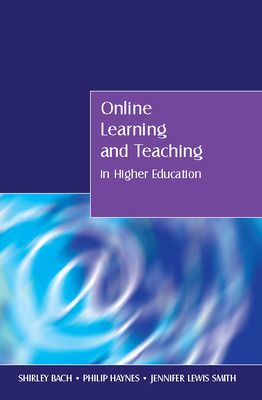Online Learning and Teaching in Higher Education
- Access the eBook anytime, anywhere: online or offline
- Create notes, flashcards and make annotations while you study
- Full searchable content: quickly find the answers you are looking for
I. Social and political change
II. Technical and intellectual challenges
III. Technological and institutional change
IV. Influence of USA and Australia + Northern Europe
V. Mass Higher Education
VI. IT Skills
VII. Students’ lifestyles
VIII. Part time to full time work
IX. International HE Market
X. Web / Internet growth
XI. Dearing Report/ Harris Lifelong Learning
XII. JISC
Chapter Two: Where to begin with online learning
I. What technology is available and desirable
II. Orientating to online learning – staff preparation
III. Identifying student suitability for online learning
IV. Pre-assessment of self
V. Learning styles and online learning
VI. Role of personal tutor
VII. Androgogy
VIII. Modes and levels
IX. Learning philosophies
X. Attitudes towards IT
XI. Possibilities
XII. Deep and surface learning
Chapter Three: Institutional and regulatory issues
I. Assessment/ examination
II. Attendance
III. Boundaries
IV. Online submission
V. External examination
VI. Plagiarism
VII. Quality assurance
VIII. Online information Sources – e.g electronic journals
IX. Regulations
X. Intellectual property
XI. Institutional checklist for learning projects
Chapter Four: Design of Online Learning Environments
I. Influence of SENDA on practice and learning
II. Technical design
III. Structuring the environment
IV. Special interest/ Subject/ professional interest
V. Navigation
VI. Time management
VII. Replicating environments classroom activity
VIII. Structuring the environment
IX. Learning spaces
X. Learning communities
XI. MLE/VLE
XII. Consistency of Design
XIII. Managing large groups
Chapter Five: Learning Methods
I. Distance versus blended approaches
II. Asynchronous conferences
III. Synchronous conferences
IV. PowerPoint
V. Video and audio
VI. Simulations
VII. Virtual classrooms
VIII. Factors restricting choice e.g. bandwidth
IX. Conclusion the challenge of meshing technology with teaching
Chapter Six: Applying online learning in Higher education
I. Lectures
II. Seminars/small groups
III. Dissertations and projects
IV. Action learning
V. Problem based learning
VI. Workbased based learning
VII. Tutorial support
VIII. Assessment methods
Formative summary essays, exams and multiple-choice questions
Index.
- What are the links between theory and practice in the area of online learning in higher education?
- What are the strengths and weaknesses of the online approach?
- How can online learning be used to enhance the student experience?
- Understand quality issues with regard to online learning
- Design appropriate courses
- Create stimulating online learning environments
- Transform learning methods
- Adapt and develop strategies to enhance online teaching practice

